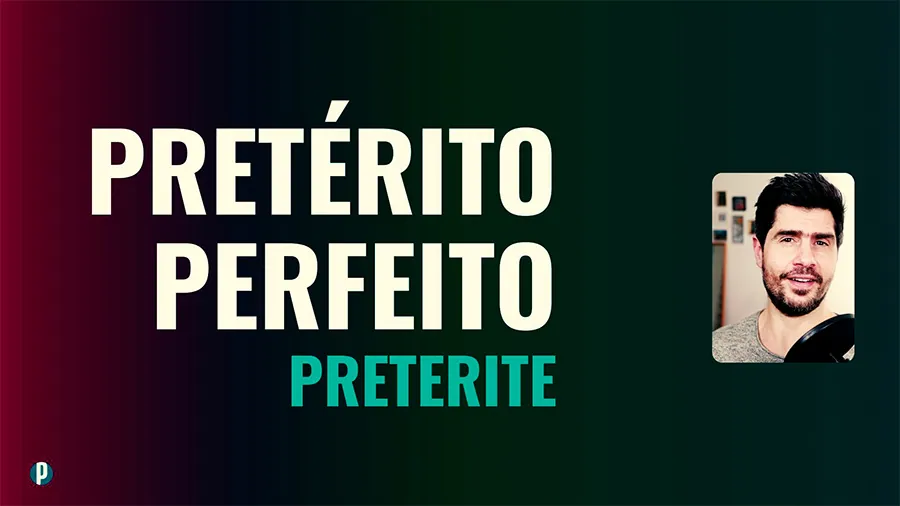葡萄牙语完成时态与不完美时态:知道何时使用其中之一
葡萄牙人 完成时和不完美过去时(又名 Pretérito Perfeito and Pretérito Imperfeito 对于母语不区分过去时(包括英语)的语言学习者来说,这往往是一个令人头疼的问题。
两者有什么区别?
葡萄牙语的过去完成时和不完美过去时暗示着不同的时间性质。完成时态表示有时间限制且已完成的动作,而不完美时态则随着时间的推移而扩散,意味着连续性或重复性动作。
使困惑?
让我们看一下这个简短的片段,其中标记了完美和不完美 蓝色的 and 红色的 分别:
Eram mais ou menos 13h quando o meu pai chegou a casa. Eu estava a comer o almoço e ele sentou-se ao meu lado sem dizer uma palavra. Eu senti que qualquer coisa estava mal. O meu pai era uma pessoa bastante faladora e aquele silêncio não era normal. Decidi então perguntar-lhe: “O que é que se passa?” Ele permaneceu calado e eu estava a ficar assustado. Passado um momento lá disse que …
It was around 1 pm when my father got home. I was having lunch and he sat by my side without saying a word. I felt that something was wrong. My father was a talkative person and such silence didn’t fit him. I then decided to ask him: “What’s going on?” He remained silent and I was getting scared. After some moments he finally said that…
阅读该片段并仔细观察彩色动词形式后,您现在能理解上面的定义吗?
如果你仍然迷失也没关系。我们是否使用完成时态或不完美时态取决于时间上的细微差别,这些细微差别通常很微妙,你可能需要一些时间才能理解它。
接下来,我们将仔细研究它,希望事情会开始稳定下来。继续阅读。
To simplify, I am using the terms ‘Perfect’ and ‘Imperfect’ tenses to denote Pretérito Perfeito and Pretérito Imperfeito respectively.
You may also come across the term ‘Preterite’ instead of Perfect tense (Pretérito Perfeito).
完成时态
共轭
规则动词
| ANDAR (walk) | VIVER (live) | INSISTIR (insist) | |
| eu | andei | vivi | insisti |
| tu | andaste | viveste | insististe |
| você ele, ela | andou | viveu | insistiu |
| nós | andamos | vivemos | insistimos |
| vocês ele, ela | andaram | viveram | insistiram |
读书小窍门! 了解有关葡萄牙语规则动词及其变形模式的更多信息:
• 葡萄牙语规则动词和现在时的变形模式
• 葡萄牙语规则动词和过去时的变化模式
不规则动词
| SER (be) | IR (go) | ESTAR (be) | TER (have) | |
| eu | fui | fui | estive | tive |
| tu | foste | foste | estiveste | tiveste |
| você ele, ela | foi | foi | esteve | teve |
| nós | fomos | fomos | estivemos | tivemos |
| vocês ele, ela | foram | foram | estiveram | tiveram |
了解有关葡萄牙语高频(和不规则)动词的更多信息: 葡萄牙语必知不规则动词.
ir
Ontem fui ao cinema.
我昨天去了电影院。
Já foste às compras?
你已经买完杂货了吗?
ser
Ontem fui irresponsável.
昨天我不负责任。
Não foi ela, foste tu!
不是她,是你!

Olá! I'm Pedro and I'm your Portuguese teacher.
Ready to unlock the beauty of European Portuguese? Portuguesepedia is your key! This all-in-one platform provides a wealth of learning resources, from bite-sized video lessons to immersive idiomatic dips. Perfect your pronunciation and aural comprehension with listening drills and solidify your grammar with in-depth articles. Start your Portuguese journey today!
Share this article
Get my guide "Key Strategies to Learn Portuguese" for FREE.


